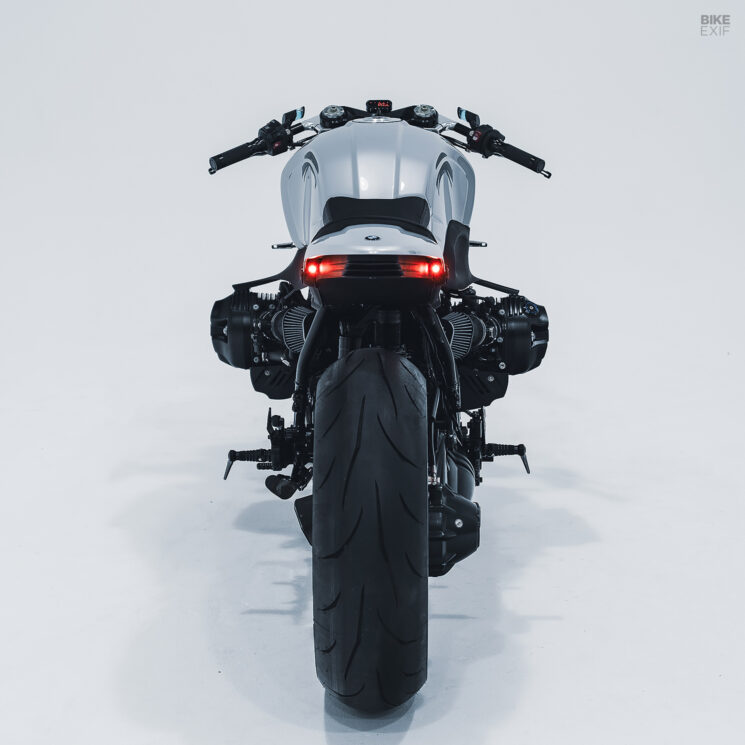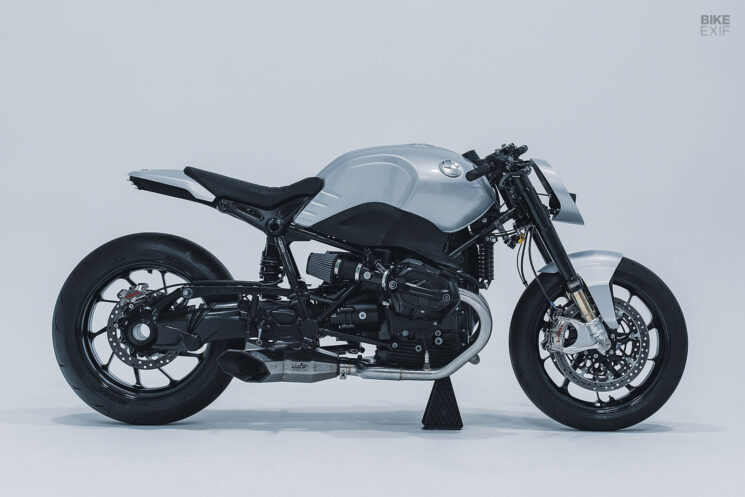
Although the BMW R nineT was originally designed as a throwback to classic BMW boxers, it’s always had a modern edge. That leaves customizers with two options—ramp up the nineT’s retro appeal, or lean into its modern underpinnings. No points for guessing which way Shawn Yang went with this BMW R nineT café racer.
Based in China, Shawn’s been fiddling with his nineT since he bought it five years ago. Most of his experimentation has been outwardly focussed, with the bike used as a test bed to develop bolt-on parts and kits for other nineT owners. So not only does his BMW look slick as heck, but it’s loaded with carefully prototyped 3D-printed parts.

Shawn’s rolling project kicked into high gear when he connected with an industrial designer on the other side of the globe. “I love to share drafts and prototypes on Facebook groups to get feedback,” Shawn tells us. “When I posted a prototype of a tail tidy, I met Trevor Dyment, an industrial designer at Formlabs who loved my designs and offered help to refine them.”
“We collaborated across the Pacific through the internet. The main idea was to build a futuristic, concise, and top street performance café racer, based on my favorite BMW R nineT.”
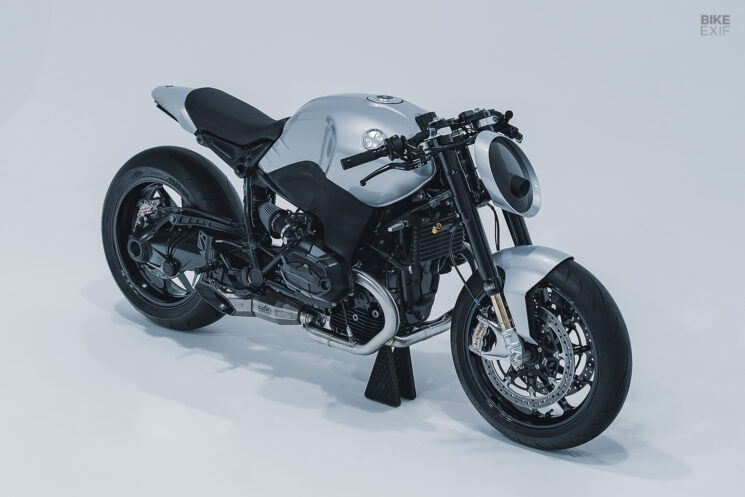
Most of the bespoke parts on Shawn’s R nineT (which he’s nicknamed ‘The Futurist’) were created using four distinct 3D printing techniques. The transparent bits were made using the popular stereolithography (SLA) printing method, HP’s multi-jet fusion (MJF) method handled medium-size nylon parts, and the selective laser sintering (SLS) method was picked for larger nylon parts.
Finally, fused deposition modeling (FDM) was employed to build parts mounted close to the engine. Those bits were printed out of PAHT-CF—a high-temperature polyamide, reinforced with carbon fiber, that can withstand temperatures of up to 194 ℃.
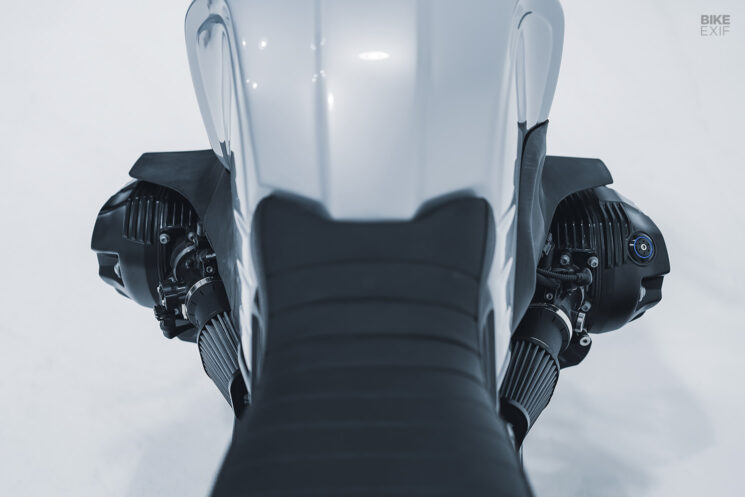
The main PAHT-CF parts are the ‘wings’ that run along the bottom of the tank, replacing the original right-side air intake and left-side trim. They’re the only 3D-printed parts on the bike that have been left unfinished—a deliberate move by Shawn to highlight the technology used.
At the front end of the bike, you’ll find a 3D-printed fender that’s been designed to hide all of its fasteners. Just above it sits a custom headlight nacelle, featuring a transparent face with an LED light poking out of it. The lightweight arrangement mounts to the lower yoke, creating the illusion that it floats in front of the forks.
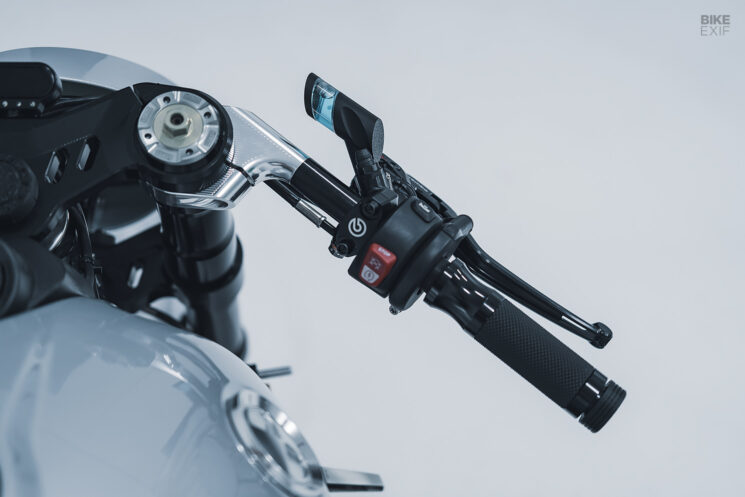
The cockpit wears a CNC-machined top yoke and elegant clip-ons, with a tiny Motogadget speedo and LED warning light strip sitting front and center. The brake and clutch master cylinders are Brembo parts, but the fluid reservoirs are one-offs, inspired by BMW’s Vision DC concept. The design is currently in the prototype stage; Shawn reports that it works as intended so far, but he’s testing the integrity of the material before he fully trusts it.
Shawn kept the R nineT’s stock fuel tank but dressed it with a Rizoma fuel cap and custom aluminum roundels. “We added twelve crafted grooves around the outer ring, like a clock, in tribute to BMW motorcycles’ centennial milestone,” he adds.
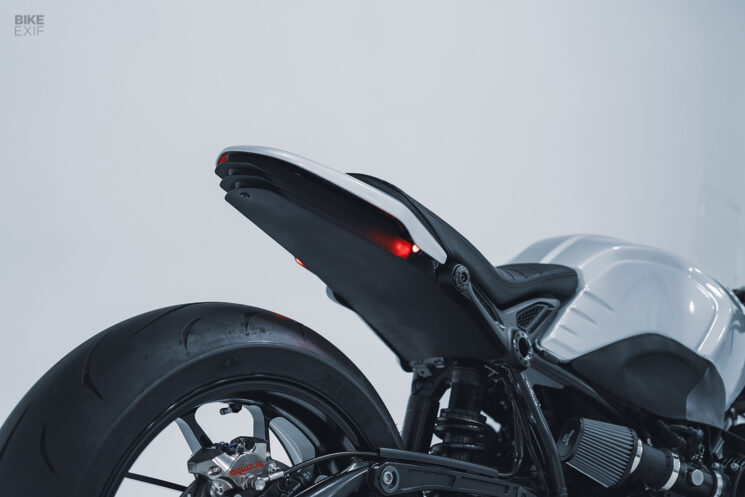
The seat and tail bump are from BMW’s options catalog for the nineT. Shawn picked them because they complement the OEM fuel tank perfectly, focusing instead on reworking the areas below and behind them. A 3D-printed section shuts off the underside of the tail, terminating in a finned section area that’s flanked by a pair of hidden Rizoma taillight and turn signals combo LEDs.
To keep the design slim, Shawn had to relocate the myriad electrical bits that normally live under the seat. They now live under the tank and behind the new wings. With the airbox replaced by a pair of SF Spring filters, the frame now cuts an ultra-sharp line from the motor to the tail.
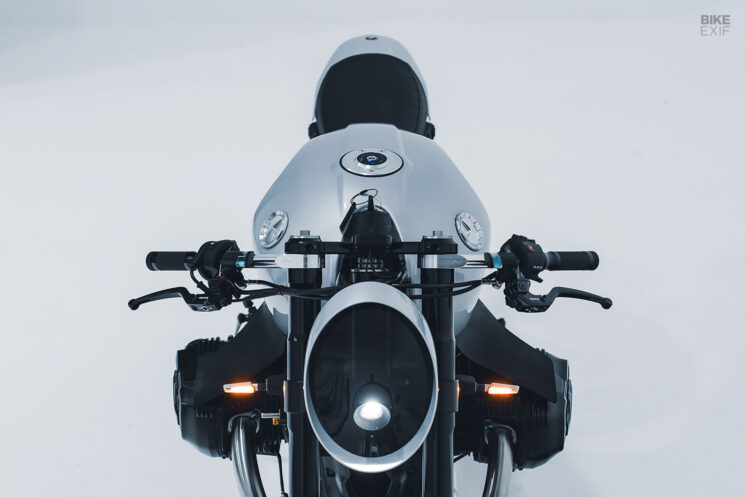
Shawn and Trevor’s custom parts only tell half the story. Beyond the neo-futuristic aesthetic lies a spread of tasty upgrades. “I didn’t want to build a showpiece that you store in a showroom and only ride it at special events,” Shawn says.
“It should outperform any factory model for both urban and highway riding in your daily life, providing you with the ultimate driving experience.”
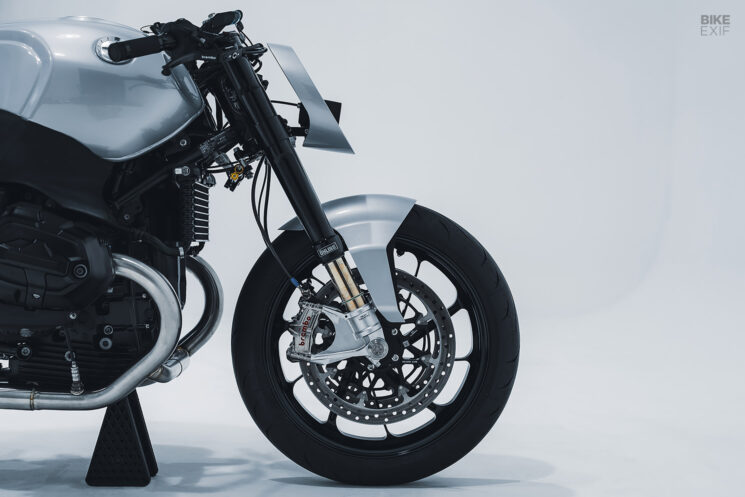
To that end, upside-down Öhlins forks adorn the front, with a longer-than-stock Öhlins shock propping up the rear. Brembo brake calipers do duty at both ends, gripping a pair of Brembo’s swanky T-Drive rotors at the front. HEL brake hoses account for further braking improvements.
The wheels are forged alloy parts that pull inspiration from the BMW HP2 Sport, and the front axle is a custom-made titanium item. A rowdy box-style exhaust from G&G Bike adds a final touch.

The BMW R nineT’s stark paint job matches the bike’s focused stance and slick lines marvelously. Now that his BMW R nineT café racer is complete, Shawn is gearing up to put some of these parts into production.
Watch this space.
